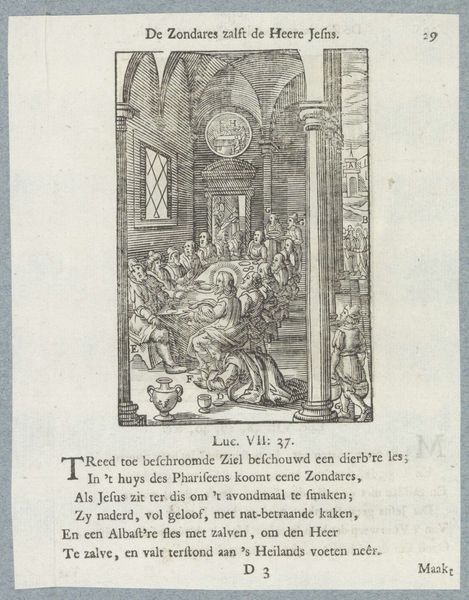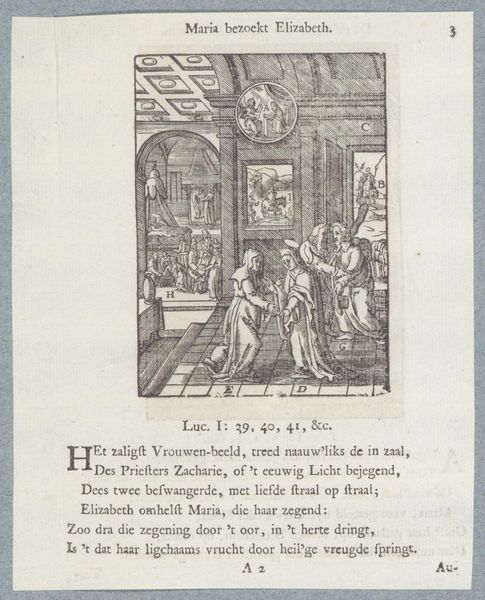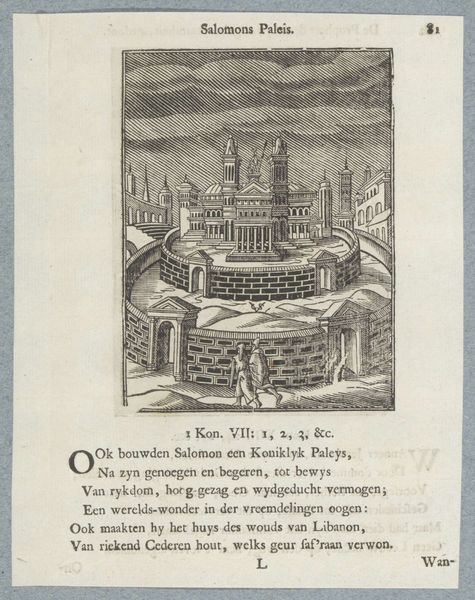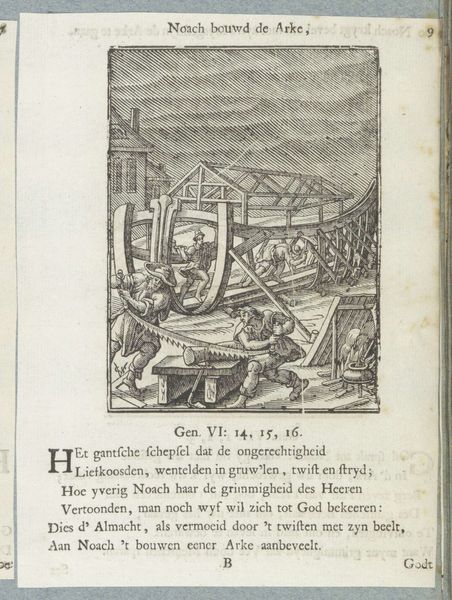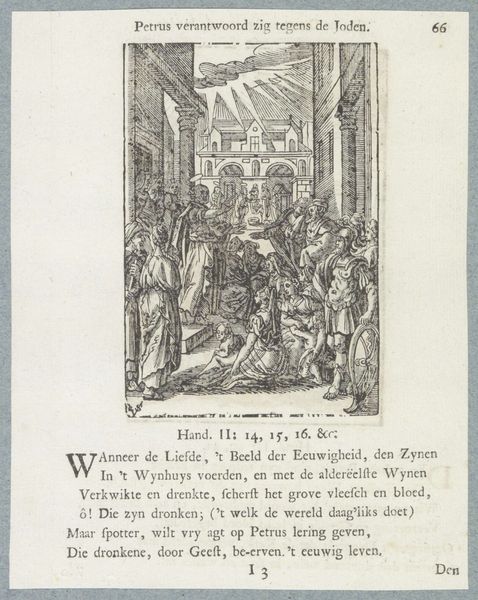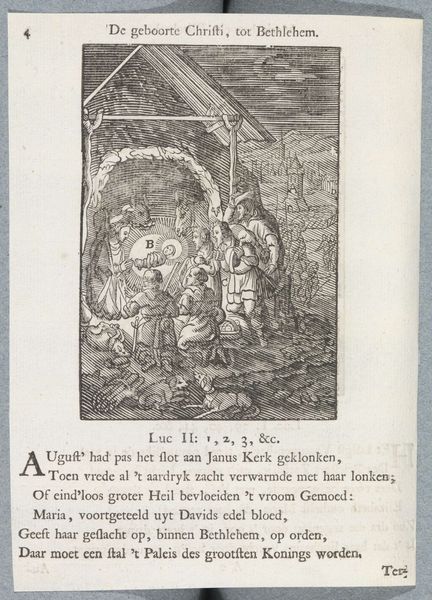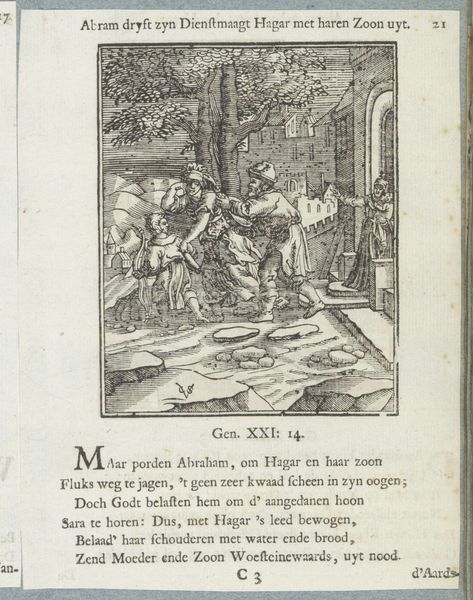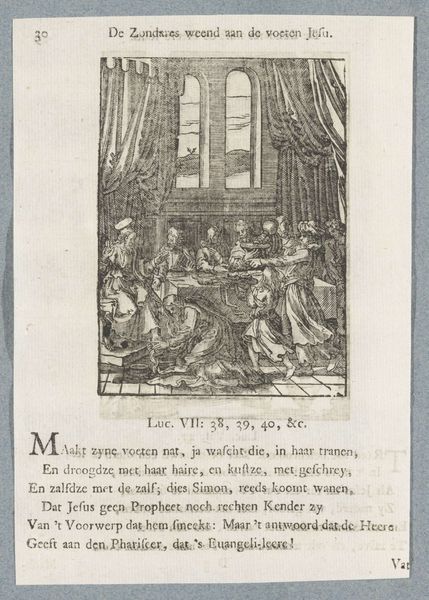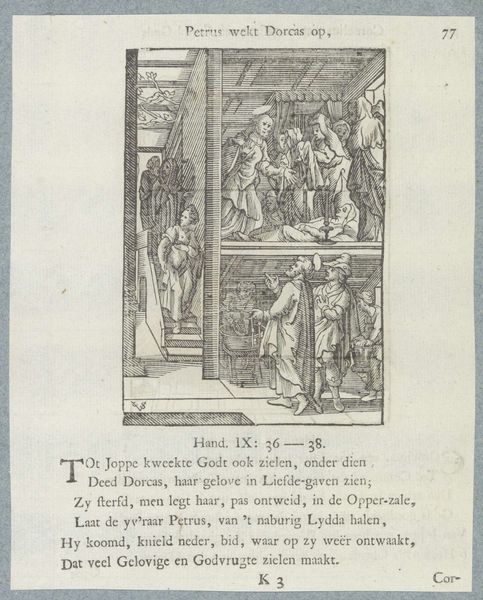
print, engraving
#
baroque
# print
#
landscape
#
history-painting
#
engraving
Dimensions: height 107 mm, width 84 mm, height 170 mm, width 128 mm
Copyright: Rijks Museum: Open Domain
Curator: We’re looking at "Bouw van de toren van Babel" (The Building of the Tower of Babel), an engraving dating from circa 1645 to 1740. It’s part of the Rijksmuseum’s collection and attributed to Christoffel van Sichem II. What strikes you about it? Editor: The darkness! The image is filled with a dense network of lines creating heavy shadows that seem to weigh down the figures and the tower itself. There’s an almost oppressive quality to it. Curator: Indeed. The scene depicts the biblical story of the Tower of Babel. Consider how this narrative was perceived in the context of the Dutch Golden Age when national identity and religious interpretations were being hotly contested. Van Sichem situates this grandiose architectural project within the landscape, highlighting the inherent social order through industrious construction. Editor: Yet that industriousness feels fraught, doesn’t it? Knowing the story, we anticipate its failure, its humbling. I see not just ambition but a certain hubris, a warning perhaps against unchecked power and the suppression of diversity, all captured within this moment of collaborative construction. The attempt to homogenize a population with a single language for purposes of building the tower becomes an act of political and social oppression when divine powers retaliate and demolish the plan. Curator: Absolutely, the story also operates as a cautionary tale against challenging divine authority and disrupting the established hierarchy. Van Sichem's print underscores these themes. His decision to depict it as an ongoing project leaves the moral ambiguous – a study in aspiration and a latent lesson against it. Editor: Looking closely at the builders, there's a lack of individuality. They are somewhat interchangeable, emphasizing collective action but also perhaps the dangers of forced labor and the erasure of individual voices for the sake of a centralized, ambitious project. It echoes through history... even today we have nations focused on centralized and homogenous national narratives. Curator: That's insightful, seeing the Tower of Babel in this context reminds us of the timeless tensions between unity, diversity, ambition, and authority that keep playing out in our own era. Editor: Ultimately, it's the print’s density, the almost claustrophobic feeling created by the intense crosshatching that lingers with me. A potent reminder of how even the most magnificent human endeavors can be undermined by the darker aspects of power.
Comments
No comments
Be the first to comment and join the conversation on the ultimate creative platform.
